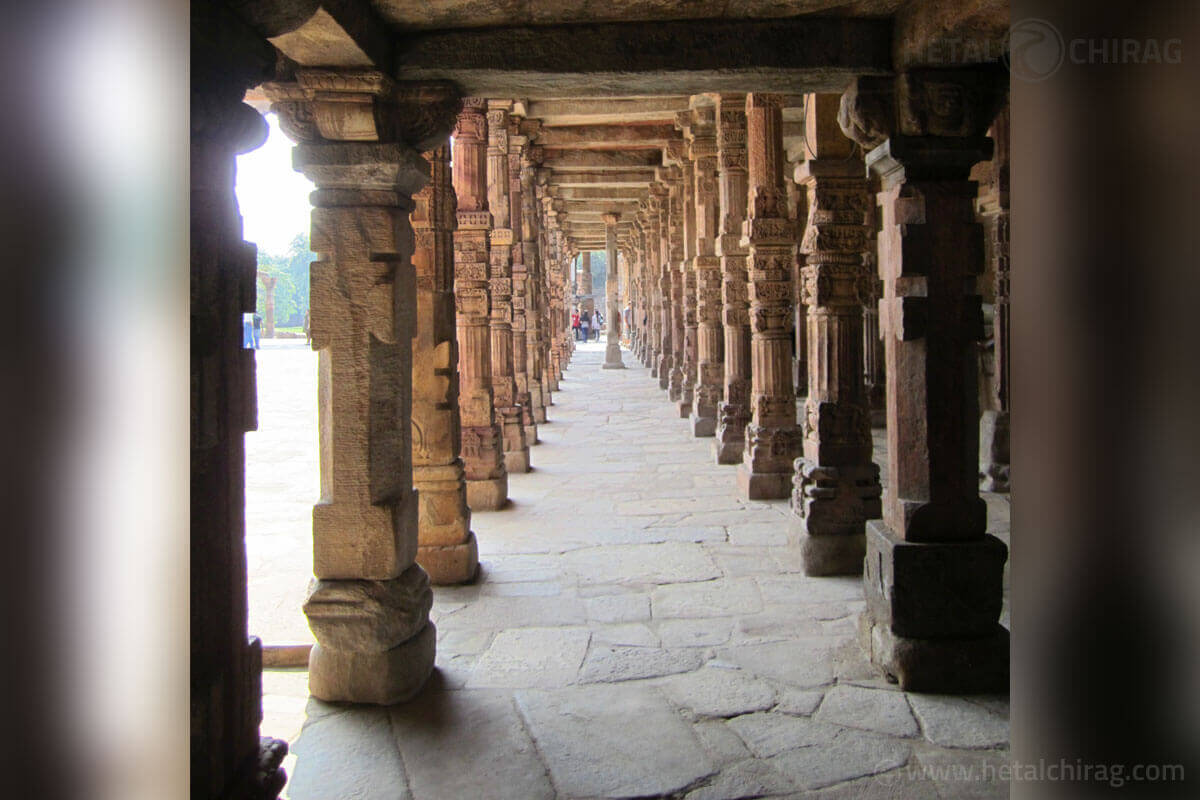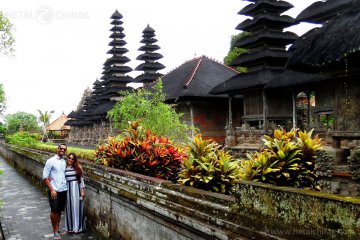If you are planning a trip to northern India, try to spend at least a few days in Delhi to check out some of the most amazing historic monuments such as the Red Fort, Qutub Minar, India Gate, Jama Masjid, Humayun’s Tomb and much more.
Before heading to the Taj Mahal in Agra, we visited almost all the touristy attractions in Delhi. The souring 73 meter high Qutab Minar was the first monument on our list. With a base diameter of around 15 meters, this iconic victory tower has five storeys. Intricately carved pillars and ceilings at the courtyard of Qutub Complex makes it a remarkable monument of the Mughal Empire. If you are fascinated by history or architecture, you should definitely stop by and visit Qutab Minar.
From Qutab Minar, we continued our journey to the majestic Red Fort in Delhi.
Walking around inside the Red Fort, felt like visiting ancient India during the Mughal era. There is just so much history and art to observe and absorb. If you want to make sure you do not miss out on the most interesting stories behind the minute details, it is a good idea to get an audio guide.
Inside the Red Fort there is a single story structure supported on the marble pillars called Diwan-e-Khas. The beautifully crafted Diwan-e-Khas was a special hall where the Mughal Emperor used to meet private audience such as ministers and representatives from different parts of the kingdom. With intricate marble inlays and floral designs, Diwan-e-Khas looks absolutely stunning even after 400 years from when it was made. You can only imagine how glorious it must have looked during the Mughal era.
Did you know that the Red Fort was originally white? In fact, the name “Red Fort” was given by the British because of the red stones and bricks of the boundary walls which were constructed to provide security to the royals.
It took over 10 years to build the Red Fort. Before it was known as the “Red Fort”, this famous architecture marvel was known as Qila-e-Mubarak which literally means the blessed fort.




